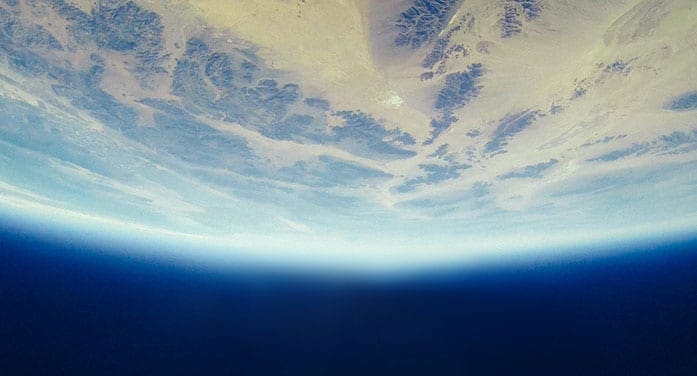Scientists have found evidence for a missing piece of a 3.2-billion-year-old continent, according to a new study by University of Alberta scientists. The research identifies the only remnant of ultra-hot lavas within this ancient landmass, located within tiny mineral grains preserved in sandstone.

Rasmus Haugaard
“Our research developed a method to identify and date pieces of our ancient continents that until now have been lost to us,” said Rasmus Haugaard, who conducted the research during his PhD studies in the Faculty of Science. “This is crucial as it can improve how we model the evolution of Earth’s early continents.”
The scientists analyzed mineral grains from millimetre-thin layers within 2.85-billion-year-old sandstones from the Slave craton in the Northwest Territories. Cratons are the building blocks of Earth’s first continents, but large portions have been destroyed by billions of years of erosion – leaving behind only mineral grains in sedimentary rocks, such as sandstones. Some of these grains are a mineral called chromite, which crystallized from volcanic lava.
“By developing a new approach using chromite grains as a detecting tool, we found that the grains were eroded from special volcanic rocks – komatiite – that could only form on the early Earth through ultra-high-temperature volcanic eruptions – about 1,600 degrees C,” said Pedro Waterton, second author on the study and former PhD student in the Department of Earth and Atmospheric Sciences.
“Finding these telltale signs of komatiite tells us more about the structure of Earth’s earliest continents and how they formed. It is likely that these types of volcanic rocks may have had a greater influence on the buildup of our earliest continents than previously thought,” said Haugaard.
“This work can be used to detect pieces of continental landmasses that no longer exist,” added Haugaard. “The study helps us to get a clearer and more complete picture of the composition and structure of our ancient continents, and how they evolved into larger continental masses as we know them today.”
Haugaard (now at Laurentian University) conducted the research under the supervision of Prof. Kurt Konhauser, and in collaboration with Waterton (now at the University of Copenhagen) Prof. Graham Pearson and Yan Luo from the Department of Earth and Atmospheric Sciences, and Luke Ootes from the British Columbia Geological Survey.
Funding for the research was provided by the Natural Sciences and Engineering Research Council. Field work support was provided by Canada’s Polar Continental Shelf Program and the Northwest Territories Geological Survey.
The study, “Detrital chromites reveal Slave craton’s missing komatiite,” was published in Geology.
| By Katie Willis
This article was submitted by the University of Alberta’s Folio online magazine. The University of Alberta is a Troy Media Editorial Content Provider Partner.
© Troy Media
Troy Media is an editorial content provider to media outlets and its own hosted community news outlets across Canada.


